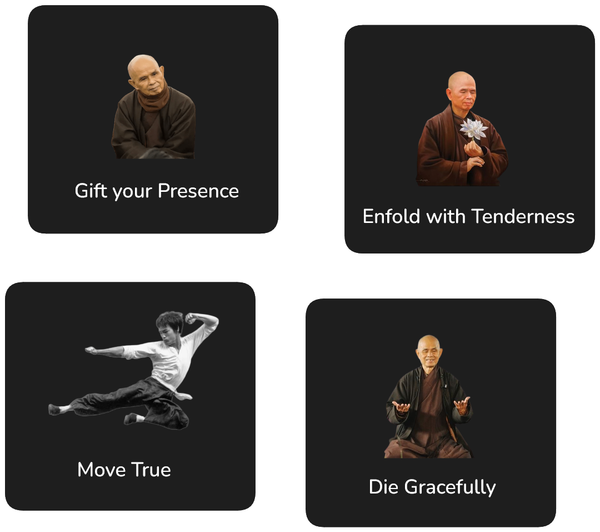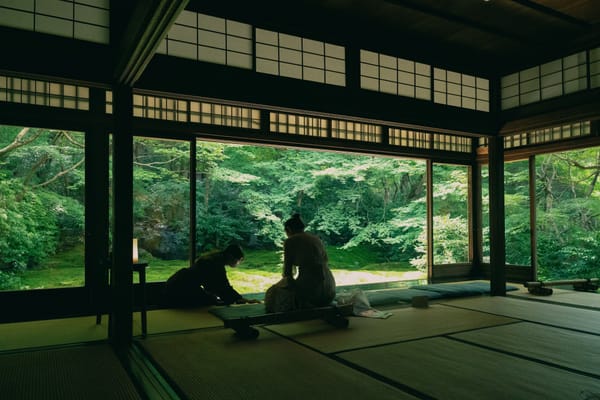Camera Movement with Three.js

I have recently been working on small example application using three.js and react-three-fiber. In the first two iterations, I first developed a simple draggable shape floating in space and then supported multiple shapes that can be moved on a physical plane. In this post, I am going to be extending the example to support camera movements. Here links to the previous two iterations and the one developed in this post:
Prototypes
Iteration 3: Camera Movements (this post)
Source Code: threejs-test
Published App: three-js-camera.surge.sh
You can move the camera using WASD and zoom in and out using the mouse scroll wheel. You can create new objects by clicking on any empty spot on the plane.
Iteration 2: Movable objects on Plane
Blog Post: Create and Drag Shapes with Three.js, React and Cannon.js
Published App: react-three-fiber-draggable-v2
Iteration 1: Draggable Shape in Space
Blog Post: Creating a Draggable Shape with React Three Fiber
Published App: react-three-fiber-draggable.surge.sh
In the following I will describe the two ways in which camera movement is supported:
Camera Movements
Using the Keyboard
The easiest way to move the camera using the keyboard would be to change the position of the camera on key press. That is what I first tried and it turned out to be a very insufficient solution. Instead, I stored for how long each key is pressed in an object and then calculate camera movement for every frame.
const keyPressed = {
}
function App() {
...
const handleKeyDown = (e) => {
if (!keyPressed[e.key]) {
keyPressed[e.key] = new Date().getTime();
}
};
const handleKeyUp = (e) => {
delete keyPressed[e.key];
};
...
}
In react-three-fiber, the useful useFrame hook is available where we then calculate the camera movement:
useFrame((_, delta) => {
// move camera according to key pressed
Object.entries(keyPressed).forEach((e) => {
const [key, start] = e;
const duration = new Date().getTime() - start;
// increase momentum if key pressed longer
let momentum = Math.sqrt(duration + 200) * 0.01 + 0.05;
// adjust for actual time passed
momentum = (momentum * delta) / 0.016;
// increase momentum if camera higher
momentum = momentum + camera.position.z * 0.02;
switch (key) {
case 'w':
camera.translateY(momentum);
break;
case 's':
camera.translateY(-momentum);
break;
case 'd':
camera.translateX(momentum);
break;
case 'a':
camera.translateX(-momentum);
break;
default:
}
});
});
We first calculate the duration how long a key is pressed and then use this to determine the momentum. Finally we use this momentum to update the position of the camera.
Using the Mouse Wheel
We use the mouse wheel to zoom in and out. For this, the position of the camera needs to change along the z axis.
const mouseWheel = (e) => {
let delta = e.wheelDelta;
delta = delta / 240;
delta = -delta;
if (delta <= 0) {
delta -= camera.position.z * 0.1;
} else {
delta += camera.position.z * 0.1;
}
if (camera.position.z + delta > 1 && camera.position.z + delta < 200) {
camera.translateZ(delta);
}
};
Here we simply determine the direction in which the wheel is scrolled and adjust the position of the camera to be higher or lower accordingly. There is a certain range in which the camera is permitted. If it gets to close to the ground or too far away from it, its position is not changed anymore even if the mouse wheel is turned.
I further had to change the way the drag movement was implemented. This originally worked only using the position of the mouse on the screen, since the screen never moved.
In case of an dynamic camera, we need a bit more calculation to be done which I encapsulated in the get3DPosition method.
const get3DPosition = ({ screenX, screenY, camera }) => {
var vector = new THREE.Vector3(screenX, screenY, 0.5);
vector.unproject(camera);
var dir = vector.sub(camera.position).normalize();
var distance = -camera.position.z / dir.z;
var pos = camera.position.clone().add(dir.multiplyScalar(distance));
return [pos.x, pos.y, 0];
};
The major limitation I want to work on next is the lightning. There is currently a SpotLight light source that only covers a small part of the plane and objects which are not within the cone of this spotlight are not rendered in an aesthetically pleasing fashion.
The full source code is available on GitHub.





